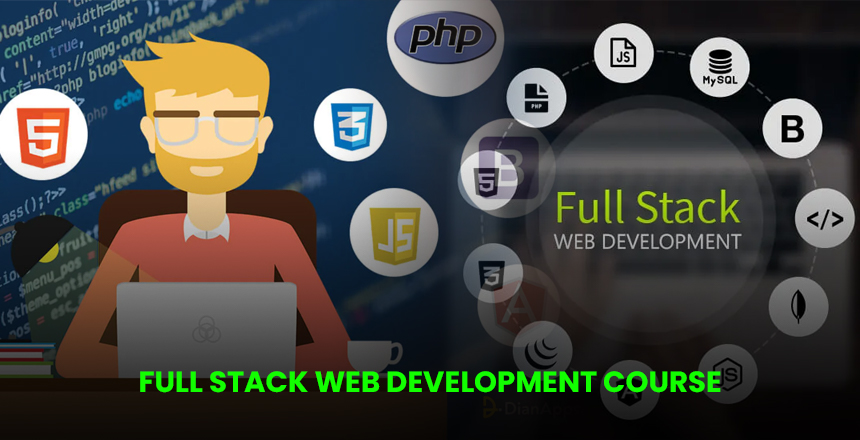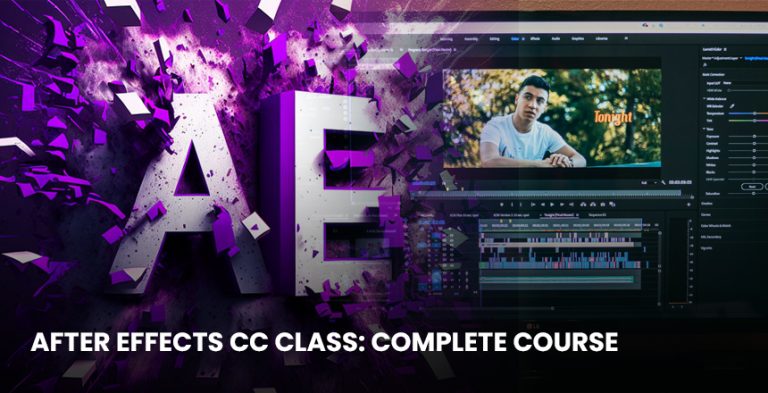With technology ever on the move, web development has maintained its status as one of the most sought-after skills. As businesses move online and startups with digital-first mindsets embrace this paradigm, the demand for skilled developers peaks greater than ever before. Full Stack Web Development is one among the several specializations earned in the tech ecosystem that is entirely powerful and flexible. The Full Stack Web Development course prepares you for establishing end-to-end web applications, from front-end user interface design to back-end database management and everything in between.
What is Full Stack Web Development?
Full Stack Web Development means that both front-end (client side) and back-end (server side) web applications are developed. A full stack developer essentially means they are capable of dealing with all layers of web application development-for example, building mobile applications, designing multilayer applications with database/backend, coding interface for frontend.
Such versatility in skills assures their heightened value, for they have a panoramic view of the entire scene upon which such applications are, so troubleshooting has become much easier. From sleek e-commerce websites to enterprise dashboards, these are the ones who build what is really inside.
Key Components of a Full Stack Web Development Course
A holistic full-stack web development course will usually cover several technologies and tools. Here is a sneak peek of what a general curriculum contains:-
1. Frontend Development
Frontend development deals with aspects directly related to what end users see and interact with. It covers the front-end design of an interface that is intuitive, responsive, and visually appealing.
Core Technologies:
- HTML5
- CSS3
- JavaScript (ES6+)
- Frameworks/Libraries: React.js, Angular or Vue.js
- UI/UX Design Principles
- Responsive using Bootstrap or Tailwind CSS
2. Backend Development
Backend development refers to how the applications run on the server side – logic, APIs, and interactions with databases.
- Core Technologies:
- Node.js or Python (with Flask/Django)
- Express.js
- Ruby on Rails (optional)
- Java or .NET (based on the course offered)
3. Database Management
A full stack developer would, therefore, be expected to know how to store, retrieve, and manage data effectively.
- Core Technologies:
- SQL: MySQL, PostgreSQL
- NoSQL: MongoDB
- ORM Tools: Sequelize, Mongoose
4. Version Control & Deployment
- Modern web development relies on having some knowledge of code collaboration activities and deployment tools.
Core Tools:
- Git and GitHub
- Continuous Integration/Continuous Deployment (CI/CD)
- Hosting: Heroku, Netlify, Vercel, or AWS
- Docker and containerization (advanced)
5. Project-Based Learning
Good full-stack courses are offered first hand through real-life projects. Building real-life projects helps students apply the concepts learned, develop confidence, and work toward a portfolio.
- Some example projects include the following:
- E-Commerce Website
- Blogging Platform
- Social Media Dashboard
- Task Management App
Why Learn Full Stack Web Development?
There’s a strong case for taking a full stack development course if you are a student, working professional, or aspiring entrepreneur:
- Huge Demand & Great Salary Most of the companies are keeping highly talented full stack developers, since such individuals are able to take charge of various different areas at once. Thus, recruitment cost is reduced, making them an asset to have in-house. Salaries are also attractive and increase substantially with experience and specialization.
- You could have been a frontend developer, backend developer, or full stack developer, because then you could scope out your game better. Full stack development gives you the extra creative freedom he needs. You see your idea from start to finish. In fact, you control the entire development life cycle. This interdisciplinary learning would allow you to create better links and networks within the industry.
- Start your own venture even as a fractional or fully remote full stack. But more importantly, the “work” is that the whole profession is digital and thus the geography and careers are very flexible.
Who Should Enroll?
A Full Stack Web Development Course would be ideal for:
- College students or graduates in Computer Science or related fields
- Working professionals wanting to upgrade their skills or switch careers
- Aspiring entrepreneurs seeking to build and control their own web applications
- Freelancers looking to extend the range of services they offer
Duration and Learning Modes
Most full-stack development courses are usually between 3 and 12 months according to their intensity (full-time and part-time). One can choose to combine modes such as:
- Online Courses: Flexible, self-paced or live sessions
- Bootcamps: Full-on, complete immersion learning
- Classroom Training: Conventional on-site learning
- Many of them also offer mentoring, placement assistance and projects in the industry.
Choosing the Right Course
When evaluating a course on full stack web development, the following should be considered:
- Curriculum Breadth: Is it comprehensive enough to cover both frontend and backend?
- Instructor Expertise: Are the Instructors from the Industry?
- Project-Based Learning: Are you going to build real-world applications?
- Certification: Is there a recognized certificate at the end?
- Job Support: Is there any opportunity for internship, placement or resume reviews included in the support?
Final Thoughts
A Full Stack Web Development course is not just learning; it’s a career boost. Full stack development is what you need, whether you are entering the tech world or upgrading existing skills to create and innovate in the digital age.
Software-driven and connected worlds make full stack development right for fast career openings and exciting entrepreneurial opportunities. So what are you waiting for? Create the web one line at a time, early in the process, learning by doing.








